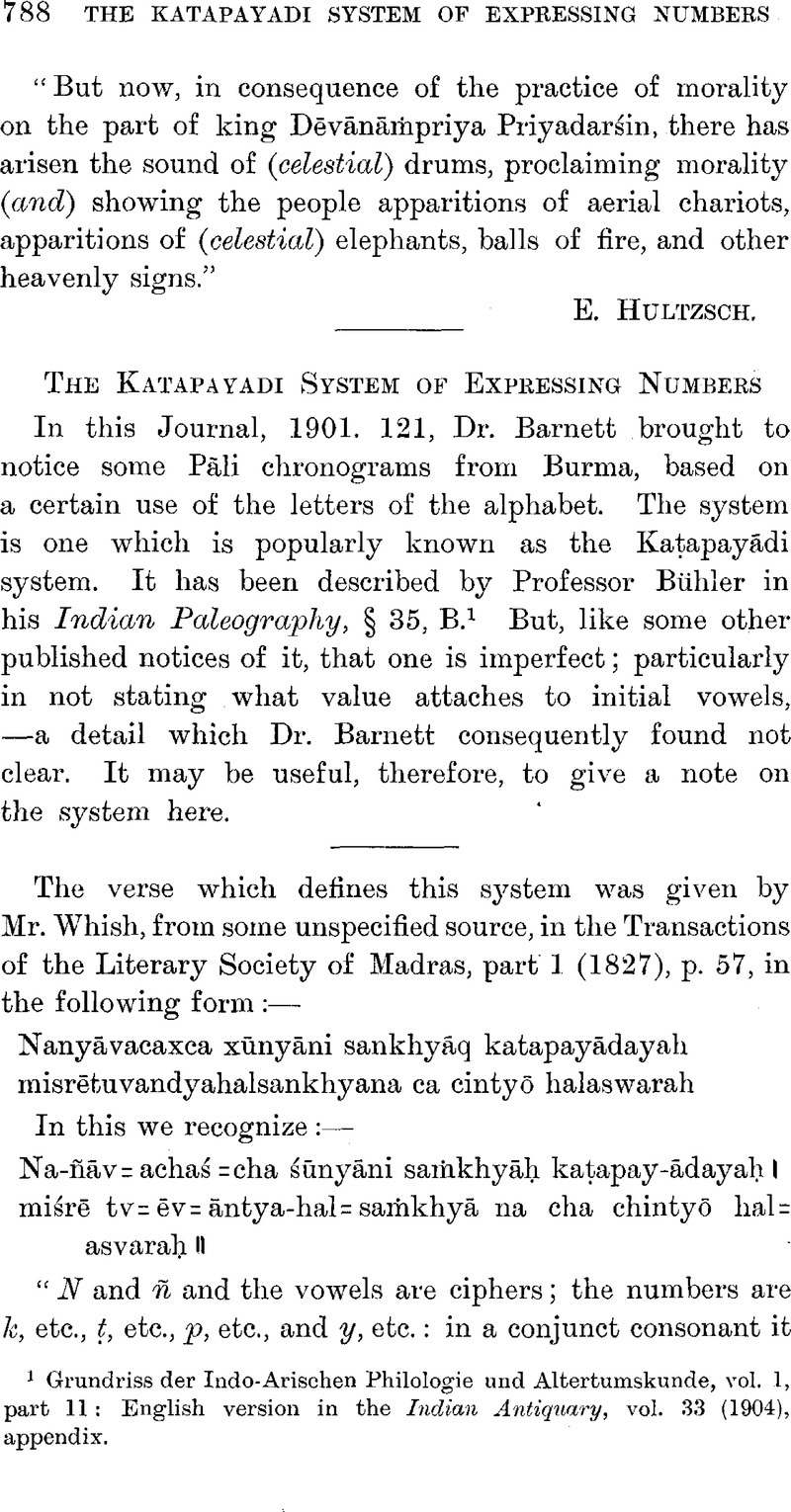Published online by Cambridge University Press: 15 March 2011

page 788 note 1 Grundriss der Indo-Arischen Philologic und Altertumskunde, vol. 1, part 11 : English version in the Indian Antiquary, vol. 33 (1904), appendixGoogle Scholar.
page 790 note 1 That is, the system which uses, e.g., the word bhūmi, ‘earth’, to denote ‘one’, nayana, ‘eyes’, to denote ‘two’, and so on.
page 790 note 2 Bentley said that the work in question is dated in its first chapter in Kaliyuga 4423 (expired), a.d. 1322: see his Hindu Astronomy (1825), p. 138. But Sh. B. Dikshit said that its date is not given, and expressed the opinion that it belongs to about a.d. 950: see Indian Calendar, p. 6, note 4.
page 791 note 1 Kielhorn's, Southern List of Inscriptions, Epi. hid., vol. 7, appendix, No. 939Google Scholar.
page 792 note 1 It is to be noted that the equation between the two eras differs here by one year from the equation used in the next date.
It may also be noted that the Sāsanavaṁsa says (p. 89) that Nāgita, otherwise known as Khaṇṭakakhippathēra, wrote the Saddasāratthajālinī in the time of king Kittisīhasūra, who began to reign in Sakkarāj 713, = A.D. 1351–52.
page 793 note 1 MrWhish, , loc. cit., p. 60Google Scholar, gave sidha, ganita, xraddā, and gih. In these details I have had to amend his transliteration.